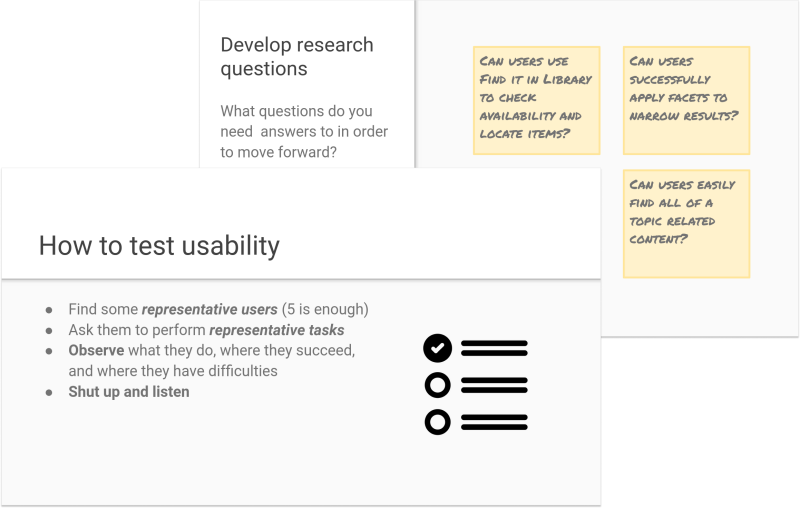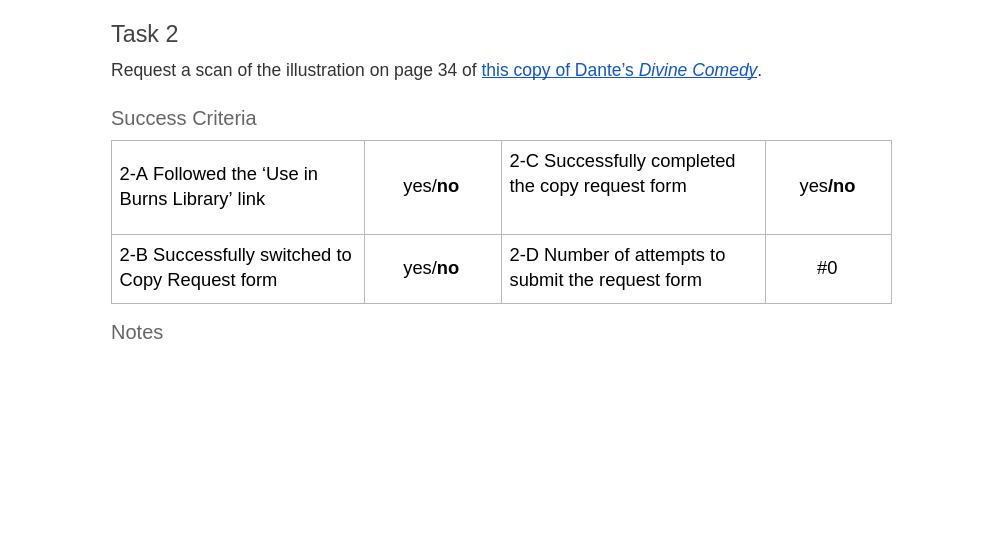Bootstrapping a UX team
- Rebuilt the User Experience team from the ground up
- Developed internal talent around UX research methods
- Established a streamlined framework for UX research projects
Over the past several years, an informal group of library staff interested in User Experience had participated in a UX committee. Led by a User Experience Librarian, the group met regularly and attempted to identify and complete user experience research projects. The group did not have a strong mandate and lacked resources, so over time the group quieted down. The projects became fewer and further between, and eventually the User Experience Librarian took a position elsewhere. With her role vacated, and the UX group dormant, leaders within the organization had grown skeptical of the value of UX research.
In the BC Library, as in many academic libraries, there is not a dedicated UX team. The work tends to be done by whoever is interested, as a small portion of their total time. My goal with the new UX group was to grow our internal capabilities, standardize our approach to make optimal use of limited resources, and build trust in User Experience research as an important source of insight for decision making, prioritizing, and design of online and physical services.
I began recruiting members to the new group by first offering training, open to anyone in the library. The training provided an overview of User Experience concepts and a detailed exploration of lightweight task-based usability testing. Each training session also included a mock usability test using another library’s website as an example. Class participants were able to get hands-on experience facilitating and observing within the first hour of learning about UX research. Since the sessions were in front of an audience, each mock test became an opportunity to learn from the process as it unfolded.

I set up a simple timeline and predictable structure for the UX group to follow for each new project. First, anyone who wanted to conduct user research would need to assign a project lead. The project lead would introduce what they were working on, describe the problems they were having, and what they were hoping to improve or learn.

I created a project page on our internal wiki for each project to document their work. I’d get them started with a timeline, and templates for a test plan, recording, and analyzing results. With my lead, the UX group helped each project lead identify their audience and research questions. I introduced the project lead to test plan templates and work with them to draft test tasks and success criteria.

Once the project lead drafted their test tasks and success criteria, we met with them again. We reviewed the test plan with the UX group and ran through several mock tests to iron out the kinks before testing with real users.
One major advantage the BC Library has for UX research is a captive audience. We can often recruit simply by standing in the lobby of the main library with offering a chocolate bar in exchange for 15 minutes of a students’ time. I scheduled 60-90 minute time slots for testing at high traffic points in the day. I asked the project lead and one member of the UX group to handle the recruiting, and we’d test recruited users immediately. In the beginning I facilitated each test and asked the UX group member and project lead to act as observers and note takers. After each test we’d discuss the results as well as the test itself. As staff became more comfortable with the process, they could take over as facilitators.

Since the UX group is essentially made up of volunteers, efficiency is critical. I structured the timeline for each project so that we can maintain a constant flow of projects with a single monthly meeting and additional time for the research itself. In each meeting, the last completed project presents their results and a new project kicks off. The first thing a new project lead sees is the successful outcome of a previous project.
The most important step in UX research is really the analysis; learning from your results and deciding what to do next. I provided an outline for a findings report for each project. The project lead is prompted to describe the research problem in detail, and they’re able to borrow from the work we’ve done together already. With the help of their pre-defined success criteria, the project lead tallys their test results and makes observations and recommendations. After completing the prompts, the project lead is left with a document they can use to share results and recommendations with stakeholders.
The findings reports have become an invaluable communication tool for project leads. Armed with a clearly documented research process, observations and recommendations they are able to convince stakeholders and prioritize needed work. The predictable timeline, artefacts, and positive outcomes of research-backed design choices has helped establish credibility.
We now have a group of staff with experience in usability testing and interest in learning more. We’re continuing to explore additional research methodologies and now have the capacity for the increased demand our work has engendered.